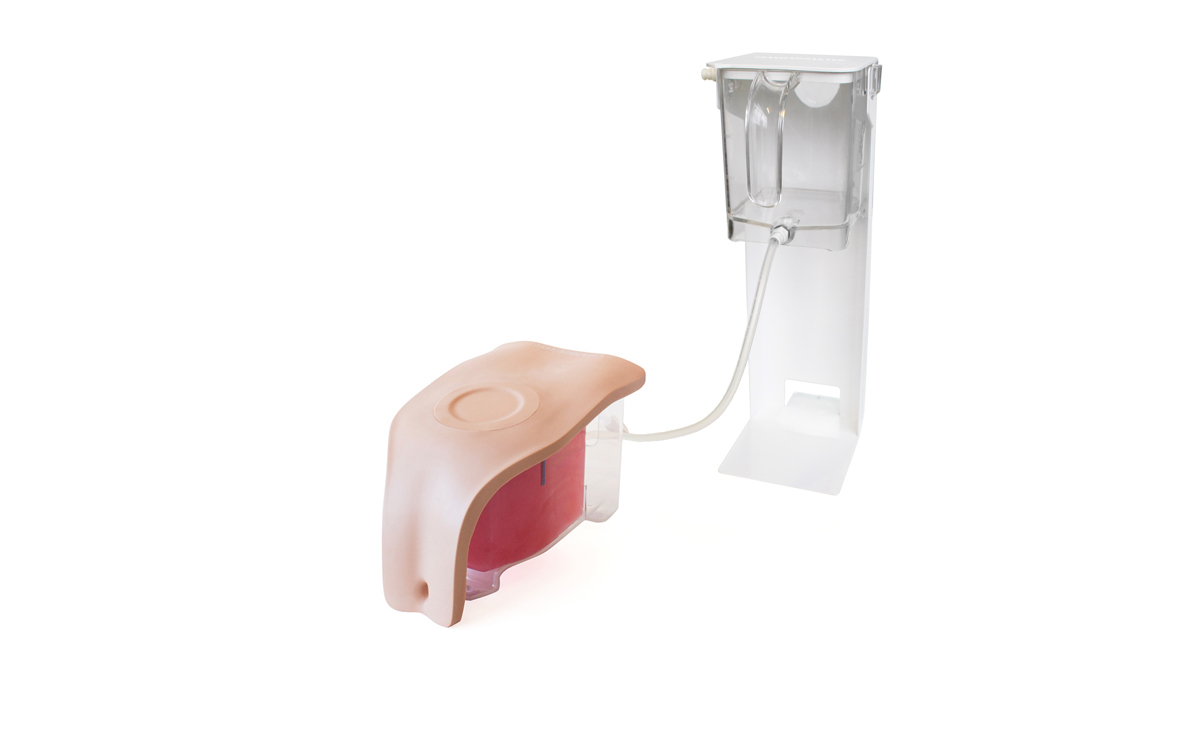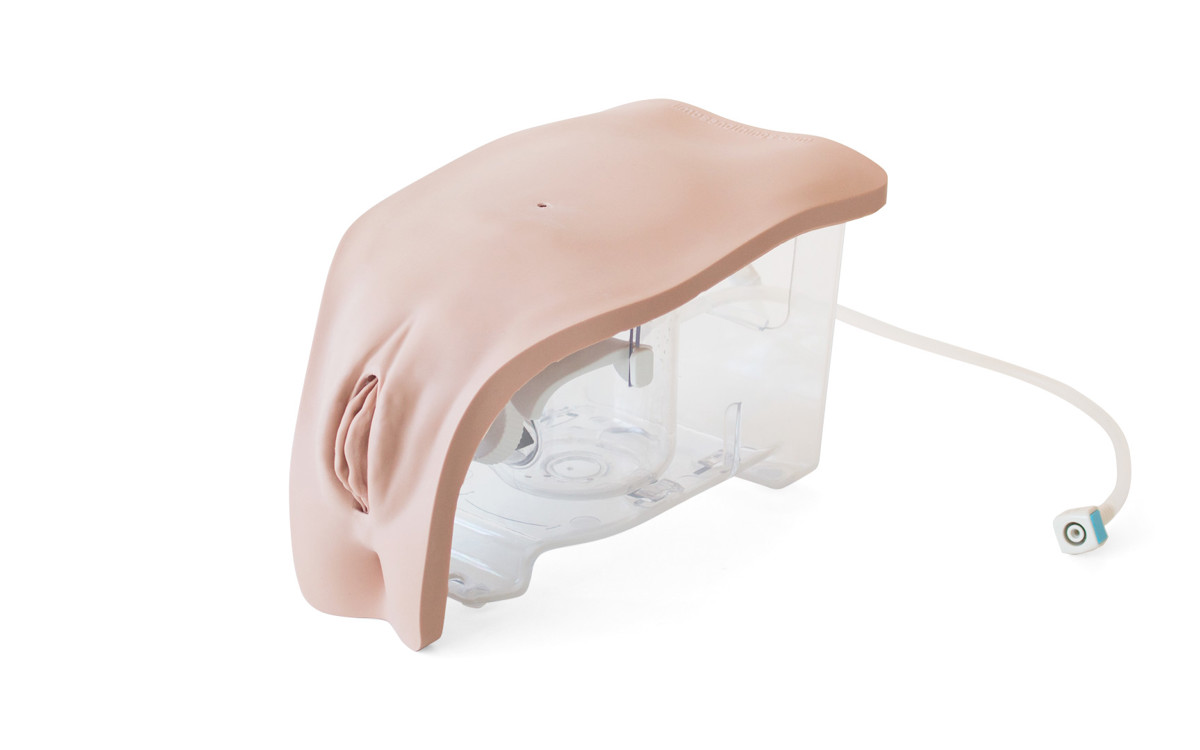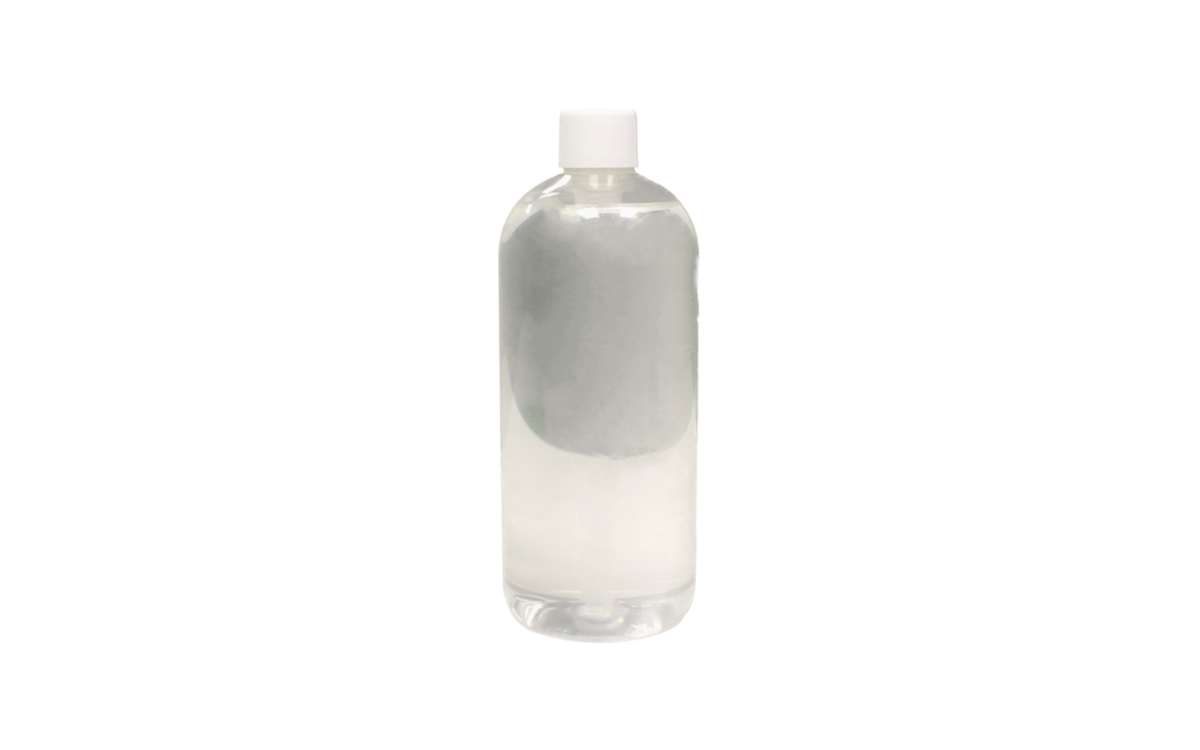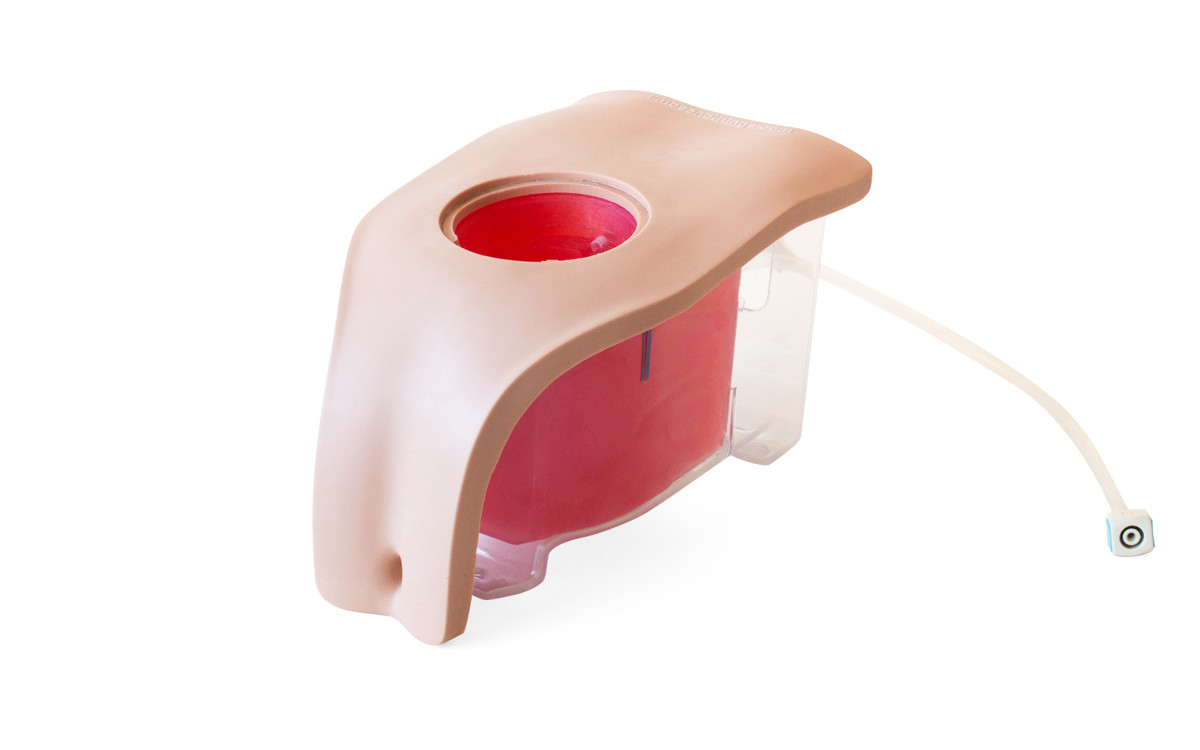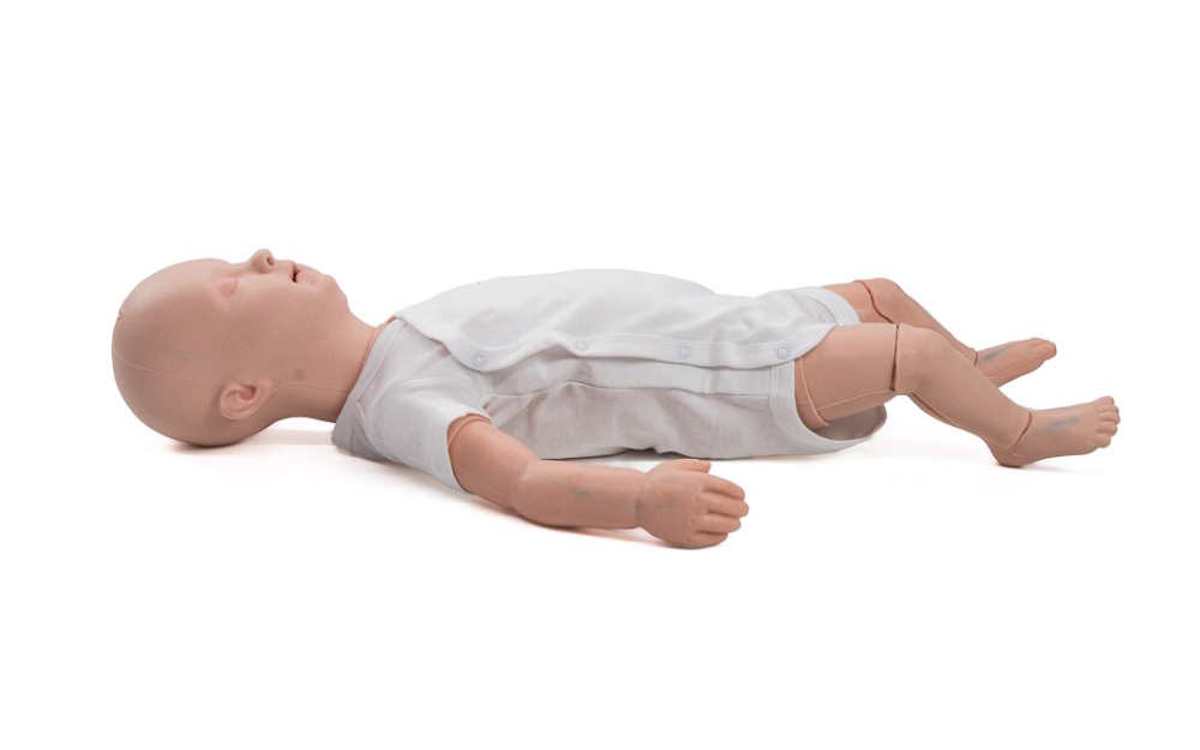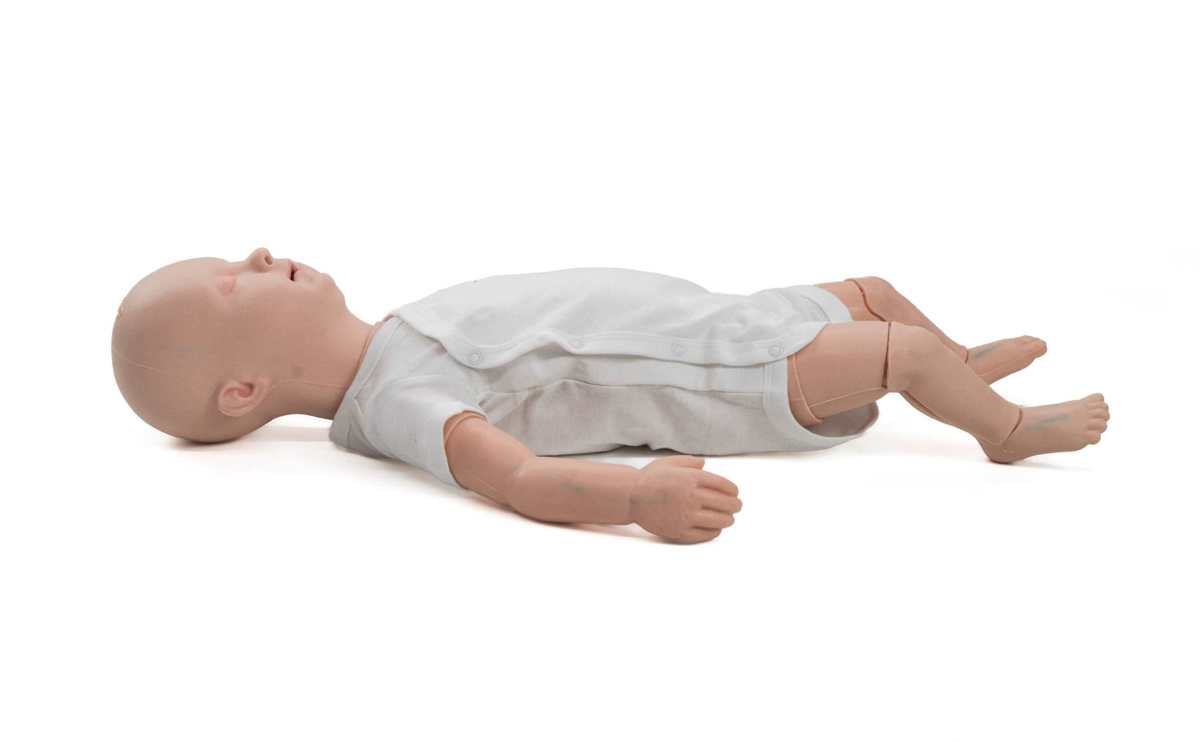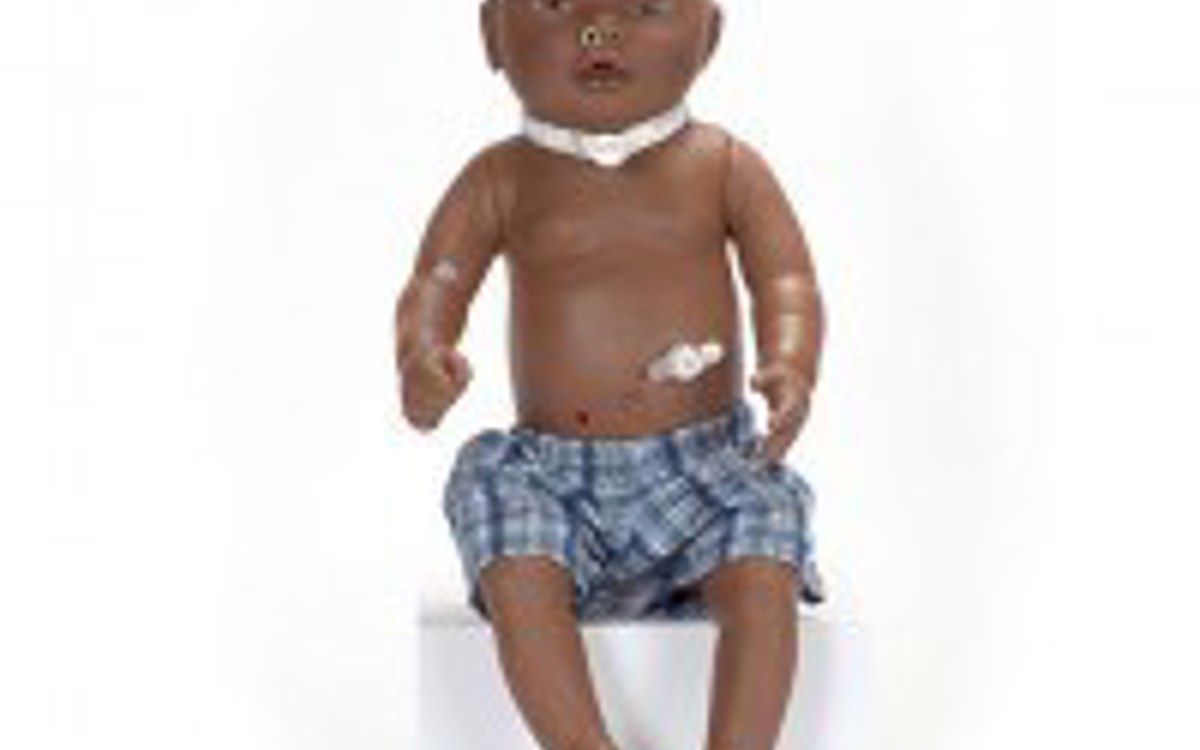
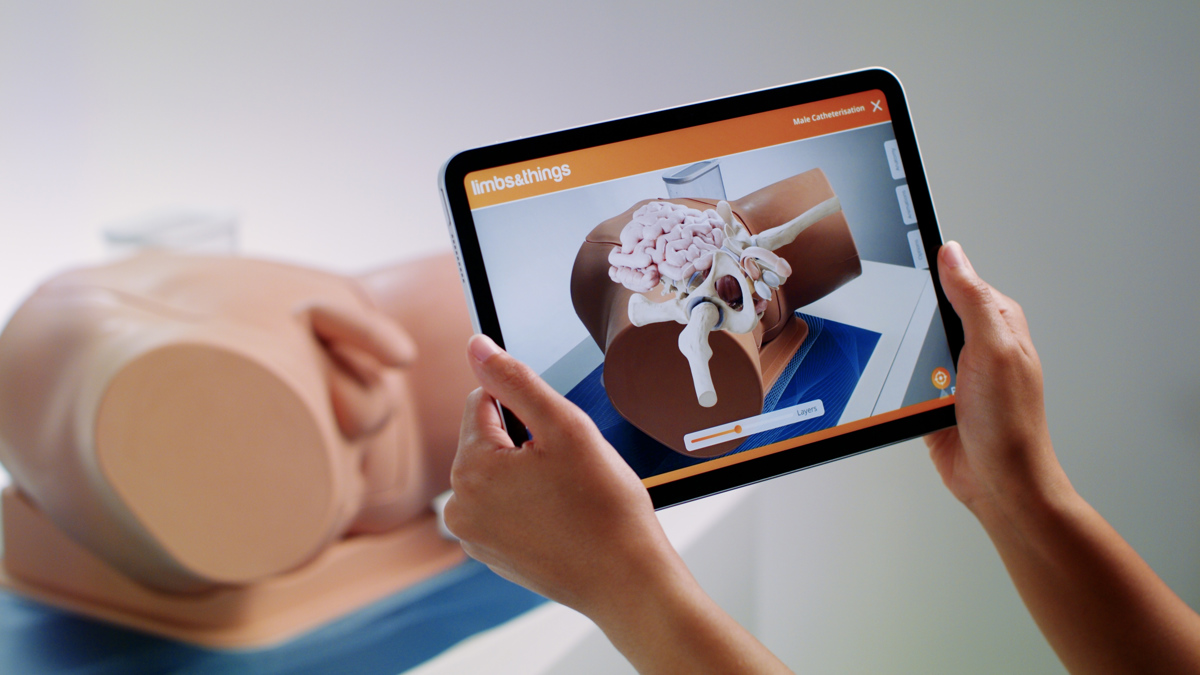



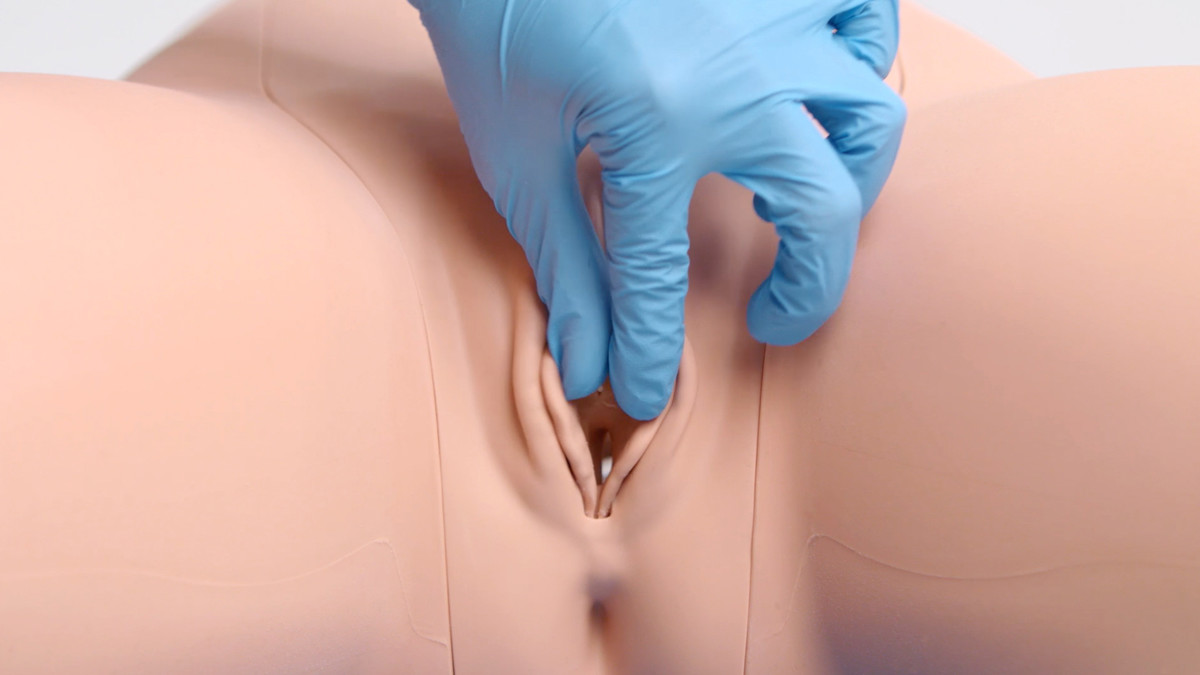


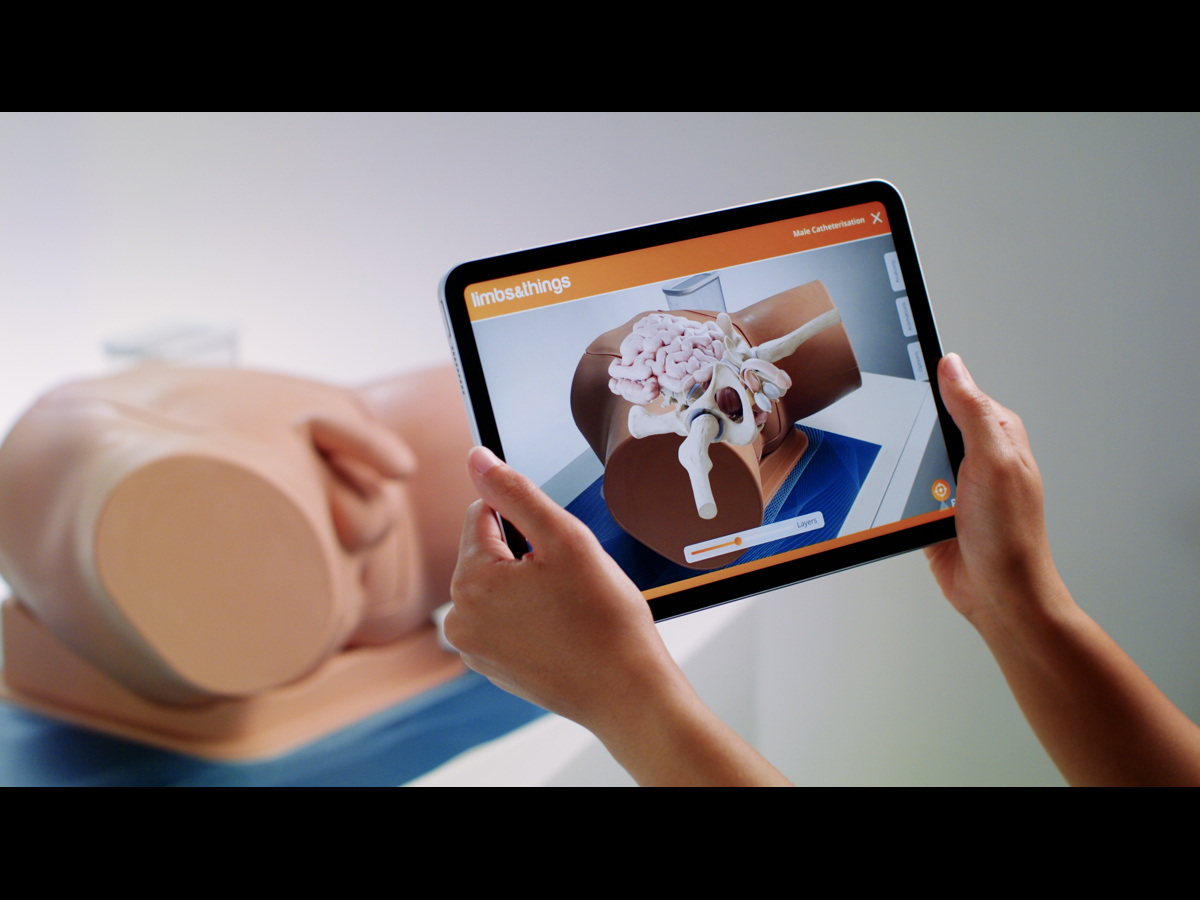


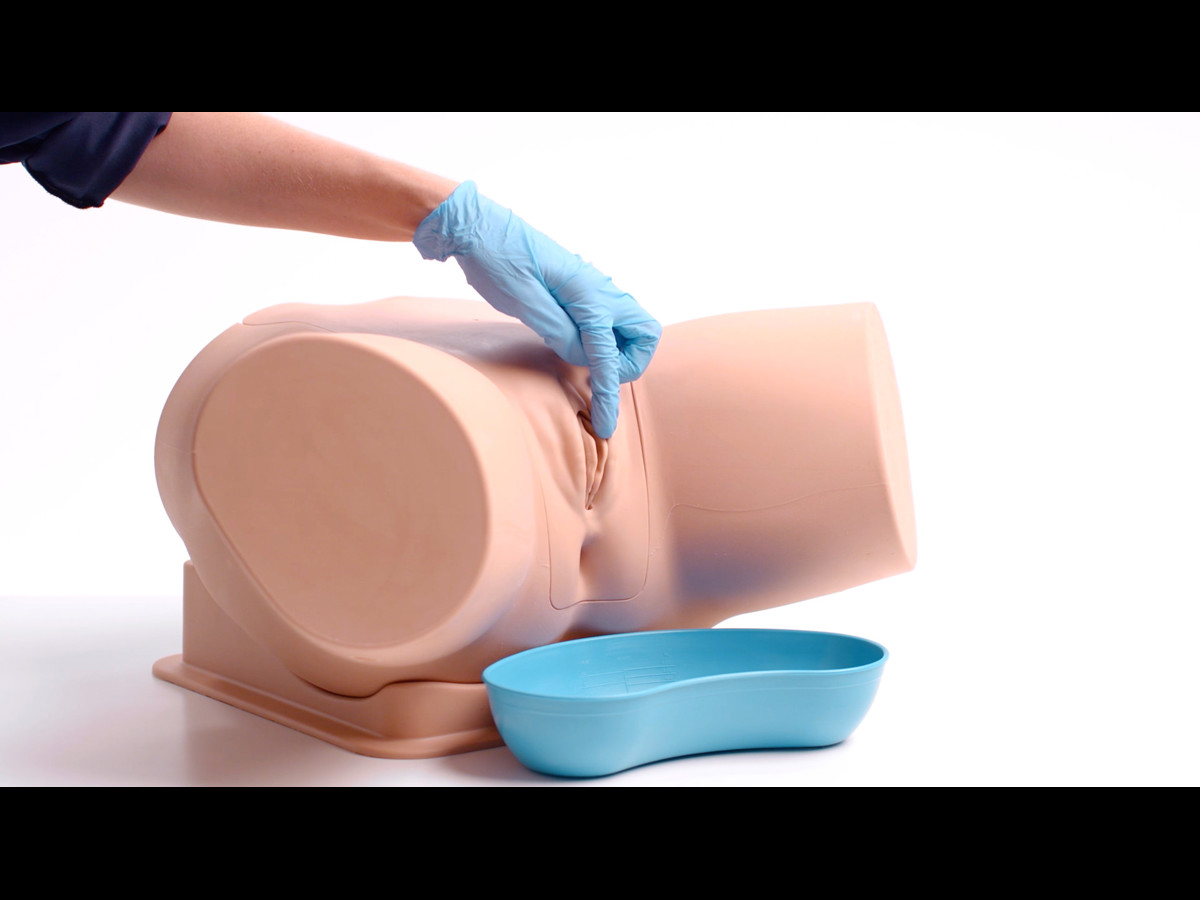
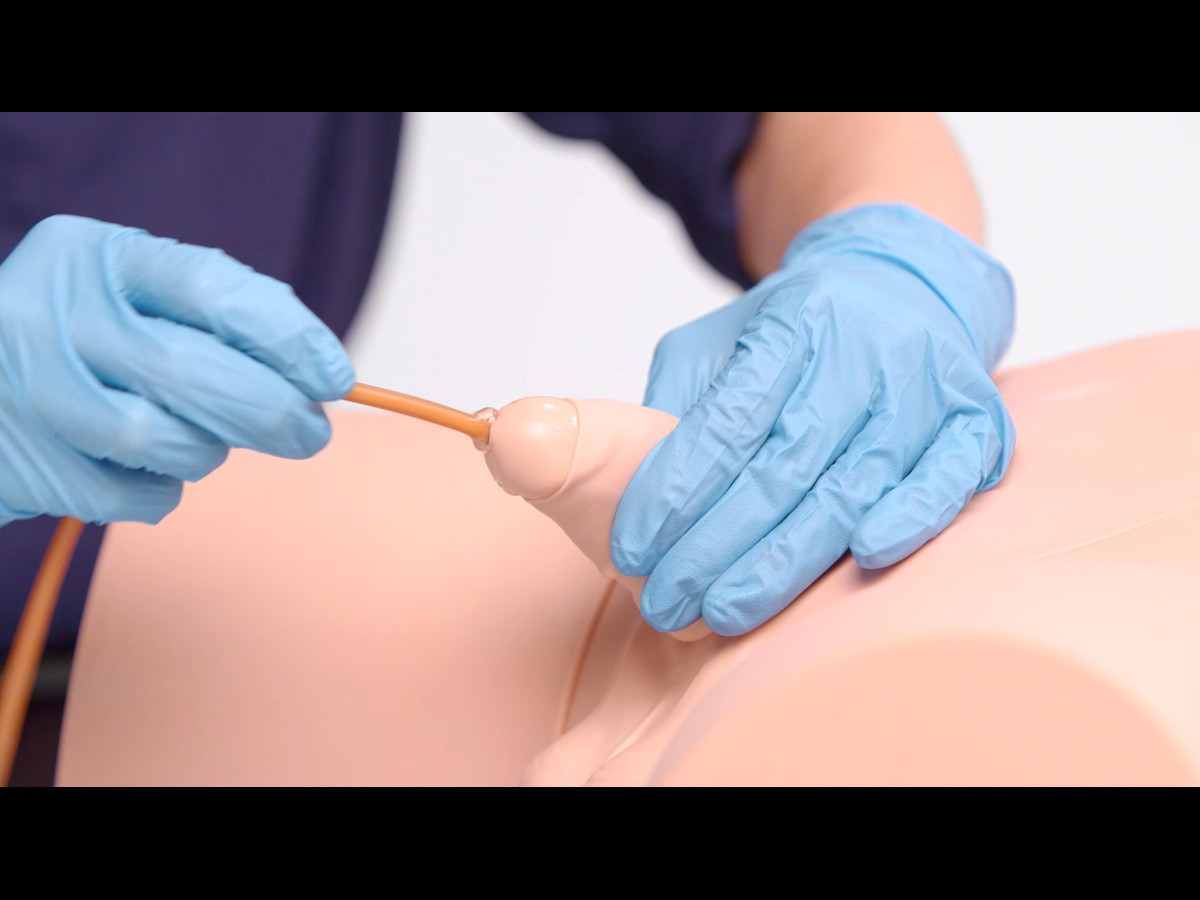
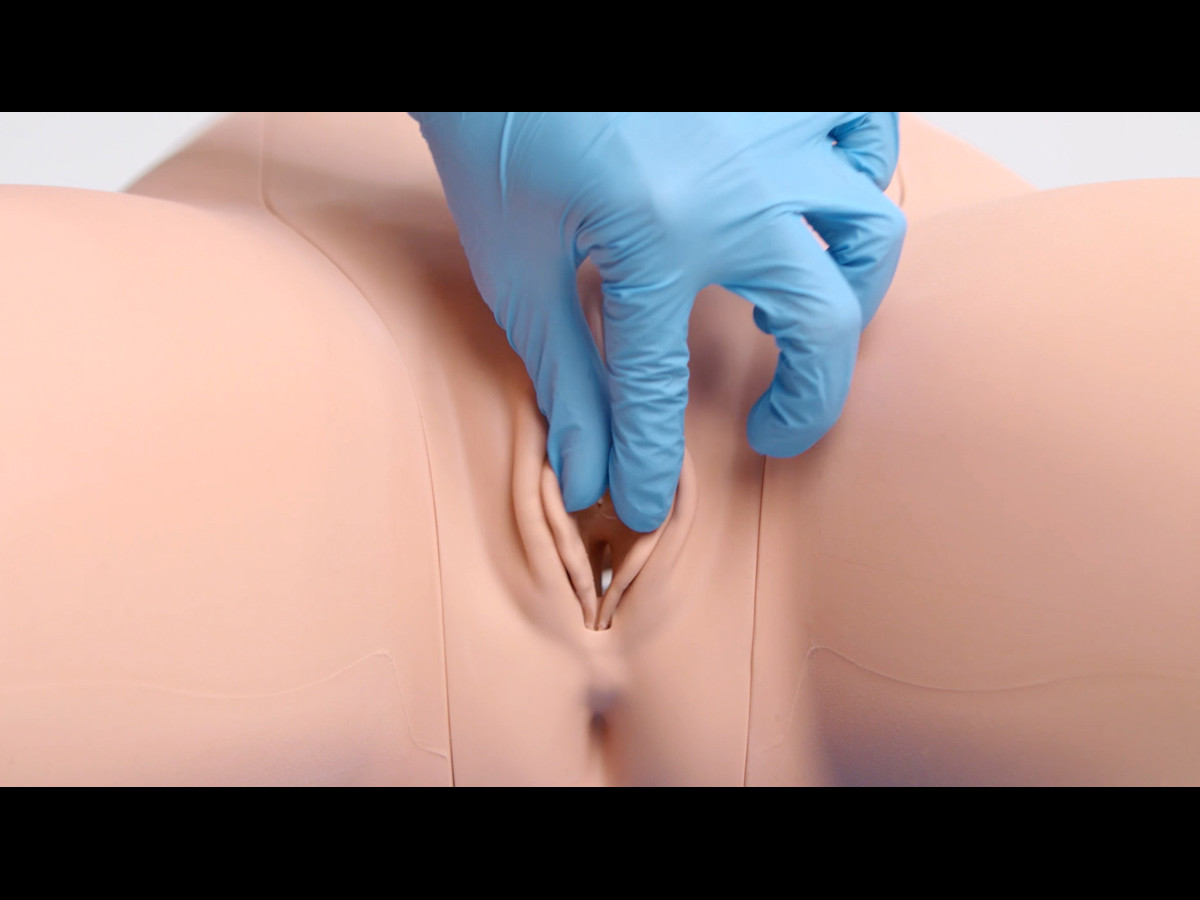

Advanced Catheterization Trainer Set (Light Skin Tone)
Skin Tone
Model
Including the Augmented Reality Training Mat!
Urinary catheterization is a fundamental skill that is taught globally in many different disciplines. Limbs & Things have developed a range of simulators that cover urethral catheterization across all levels of training.
The Advanced Catheterization Trainer Set contains two complete simulators, one male and one female. This allows for two true to life catheterizations to be run simultaneously.
Augmented Reality is now part of the Catheterization range
The Augmented Reality Mats combine real world MRI and CT scan data, with the skills of talented medical artists and digital creators, to bring the internal anatomy of our trainers to life.
Within the L&T AR app’s digital environment, you can move around your task trainer and view various overlays, including: the musculature, organs and vessels, and skeletal structure. The interface allows you to move seamlessly between the layers, as well as view their cross sections.
Urinary catheterization is a fundamental skill that is taught globally in many different disciplines. Limbs & Things have developed a range of simulators that cover urethral catheterization across all levels of training.
The Advanced Catheterization Trainer Set contains two complete simulators, one male and one female. This allows for two true to life catheterizations to be run simultaneously.
Augmented Reality is now part of the Catheterization range
The Augmented Reality Mats combine real world MRI and CT scan data, with the skills of talented medical artists and digital creators, to bring the internal anatomy of our trainers to life.
Within the L&T AR app’s digital environment, you can move around your task trainer and view various overlays, including: the musculature, organs and vessels, and skeletal structure. The interface allows you to move seamlessly between the layers, as well as view their cross sections.
Students are also able to view digital procedures in the AR environment to see how the procedure is done, and its impact on the patient’s anatomy.
What features are there on the latest catheterization models?
- Real time feedback can be given when using the modules outside of the base shell
- Updated urethra that offers a more realistic difficulty level when threading the catheter
- Improved female anatomy: softer labia to practice parting using aseptic no touch technique, and a less obvious meatus that allows for the incorrect placement during procedures
- Improved male anatomy: increased mobility of the penis for an enhanced experience when inserting the catheter, and retractable/removable foreskins
- Water delivery system offers a better user experience with easy set-up and improved connections for no leaks, allowing for better flow through the trainer
- Modular design allows for simulations run for beginners with visible internal landmarks, or real to life set up in complete model
Overview
- Augmented Reality capabilities with the Limbs AR Mat
- Robust design keeping on-going costs lower
- Improved Water System
- Softer, more realistic male/female anatomy
- Improved internal anatomy to allow for smoother insertion of catheter into the bladder
Realism
- Supple urethra & resistant sphincter providing realistic response
- Anatomically accurate bladder
- Flaccid penis with a removable foreskin for realistic male catheterization
- Increased mobility of the penis gives a more accurate representation of inserting the catheter
- Softer labia to practise parting using aseptic no touch technique
- Meatus is less obvious than previous simulator, allowing for truer to life experience when performing female catheterization
- Increased realism of anatomy, inclusion of a vaginal vault allows for potential insertion of catheter into the incorrect location
Versatility
- Modules are removeable and easily interchangeable
- Module comes with removeable foreskins
- Ability to view the path of the catheter during procedures, when using the modules outside of the Pelvic Shell
- Non-drip valve
- Reusable double-sleeve catheter packaging is supplied for teaching aseptic technique
- Syringe supplied with water-based lubricant to simulate proprietary local anesthetic gel
Cleaning
- Remove all catheters from the cath trainer
- Drain all fluid from the product
- Remove all catheters from the trainer
- Clean product surface with soft, damp cloth and mild detergent
- Allow trainer to dry completely before storing
Safety
- Components of the trainer are latex free
- Foley Catheter supplied is made of silicone coated latex
- Use supplied Milton Antifungal agent to sterilize water
- Always deflate the balloon before removing a catheter
- Only use mock gel that’s supplied with the catheterization simulator
- Use lubricant when inserting the catheter
Simulated Patient
- Can be used with a standardized patient to help improve practitioner/patient communication skills
Anatomy
Male anatomy:
- Pubic bone
- Realistic meatus
- Flaccid penis
- Foreskins (removable)
Female anatomy:
- Soft labia
- Subtle meatus
- Vaginal vault
- Pre-ported suprapubic catheter
- Pubic bone
Skills Gained
- Correct handling of male and female anatomy
- Aseptic catheterization technique
- Withdrawal of catheter
- Urinary catheterization
- Fluid management
Suprapubic catheterization techniques are possible with the addition of the Suprapubic Module.
Product Contains
Advanced set includes a full Male Catheterisation model, and a full Female Catheterisation model. Each trainer comes with a complete set of parts, consumables, and Augmented Reality Training Mat.
Works with the following products:
References
Suprapubic catheter insertion. Intercollegiate Surgical Curriculum Programme (ISCP) General Surgery Curriculum, 2021, P69.
Therapeutic Procedures 22. Male and female urinary catheterization. Passing a tube into the urinary bladder to permit drainage of urine, in make and female patients. Outcomes for Graduates (Tomorrow's Doctors), 2016, Appendiz 1 Practical Procedures for Graduates, P14.
2.4.7 Renal and genitourinary system - Undertake male and female urinary catheterization. Competence and Curriculum Framework for the Physician Assistant, 2012, 2.4 Specification of core procedural skills.
Core procedure requirements. 13. Uretheral catheterisation (male) guidance. 14. Urethral catheterisation (female) guidance. Foundation Programme Curriculum, 2012, updated for 2016, Core Procedure Requirements, P9.
The suggested structure for gaining competence in catheterisation: - Observe model/manikin being catheterised - Practise catheterisation on a model/manikin under supervision until confident - Insert and secure urethral catheters - Manage suprapubic catheters - Enable individuals to carry out intermittent self-catheterisation. Catheter Care Guidance for RCN Nurses, Second Edition, 2012, Pg 3. Pg 12.
Annexe B: Nursing Procedures. 6.1 "observe and assess level of urinary and bowel continence to determind the need for support and intervention." 6.2: "select and use appropriate continence products; insert, manage and remove catheters for all genders; and assist with self-catheterisation when required." 6.3: "manage bladder drainage." Future Nurse: Standards of proficiency for registered nurses, 2018, P35.
Technical Skills and Procedures - Competently insert a suprapubic catheter, with ultrasound guidance as appropriate - Complex catheterisation. Intercollegiate Surgical Curriculum Programme (ISCP) Urology Syllabus, August 2021, P58.
-
User Guide
60854 60872 Advanced Catheterization Trainer UG V5 Web
PDF | 4.8 MB
-
Product Brochure
导管训练模型系列 - CN
PDF | 2 MB
-
Product Brochure
Gamme de Simulateurs de Sondage Urinair - FR
PDF | 1.8 MB
-
Product Brochure
Gama de Simuladores de Sondaje Vesical - ES
PDF | 1.8 MB
-
Product Brochure
Producktauswahl Katherisierungstrainer - DE
PDF | 1.8 MB
-
Product Brochure
Nursing Range Brochure V14 Int
PDF | 3.5 MB
-
Android Software
APK | L&T ART on Google Play
-
IOS Software
PKG | L&T ART on the App Store
What sized catheter should be used with the catheterisation simulators?
The Limbs & Things catheterisation training models have been designed for use with a size 14 Foley Catheter.
While use with other sized catheters is possible, we would not recommend their use as there’s potential to damage the trainer, effecting the warranty, performance and life of the trainer.
How can we get the optimal use from our catheter simulation model?
To improve the longevity of your trainers, we would recommend the following simple steps to help you get the most out of your catheterisation set:
Protecting the silicone from rips and tears:
- Use lubrication when inserting a catheter
- Wear gloves and remove jewellery to keep sharp items from damaging the surfaces
- Deflate balloon catheters before removing them
- Always insert and remove the internal module with two hands, as shown
Cleaning and maintaining the catherisation set to avoid blockages or decay of parts:
- Always remove catheters when not in use
- Only use recommended gel and liquids with the catheter trainer
- Add an anti-fungal/sterilization agent to the water
- Always drain the trainer set after use and allow it to dry naturally
- Remove lubricant and fluids from surfaces with a soft damp cloth and mild detergent
Is it possible to check the positioning of the catheter once it has been inserted?
Yes. The pelvic unit of each catheterisation module has clear sides that contain the internal structure and bladder reservoir. This part of the unit is hidden from the trainee during the procedure by the pelvic shell and stand. Following a completed procedure, the unit can be removed with the urinary catheter still in place, allowing you to see the catheter placement and inflation of the balloon for assessment.
Is it possible to practice ultrasound suprapubic catheter insertion with the Advanced Catheterisation training manikin set?
With the addition of the suprapubic catheterisation Insertion unit, you can easily practice suprapubic techniques. Designed using the same modular casing, it is quick and easy to switch between standard and suprapubic modules.
Why does the suprapubic module only come in a female unit?
Limbs & Things gathered feedback from evaluators involved in the development stages of the suprapubic module. Their response was that the process is the same for both male and female patients when inserting a catheter in this region. The decision was made to only produce one version of this module, to keep the catheterisation range more cost effective for training purposes.
Troubleshooting:
Our catheter trainer is leaking
Here are a couple of quick checks to run on your trainer if you discover a leak:
- Is the Bladder Valve orange in colour? – If no, we would advise changing it to the newer orange valve
- Check the Bladder Valve for damage – over time the valve can become damaged, replace the valve if there are signs of wear, such as light visible through the silicone
- Has water been left in the unit when not in use? – the valves distort when left submerged in water for long periods of time. It is advised that between uses, fluid in drained. Change the bladder valve if it has been left in water and damage is visible
We are unable to catheterize our trainer
Here are some of the common issues related to unsuccessful catheter insertion on the catheterization simulator:
- Old bladder diaphragm – current bladder diaphragms are yellow in colour, older version can hinder procedures due to age
- Old catheter being used – old catheters can get stuck around the diaphragm as the balloon has been inflated numerous times, this can increase the diameter of the catheter
- Not enough lubricant on the catheter – between 5-10ml of catheter lubricant should be used before each insertion
- No lubricant applied during set up – the top of the diaphragm and underside of the bladder cap should be lubricated during assembly of the trainer
- Bladder unit in incorrect position – ensure the bladder unit is in the correct gender position, incorrect positioning can lead to an inability to catheterise



